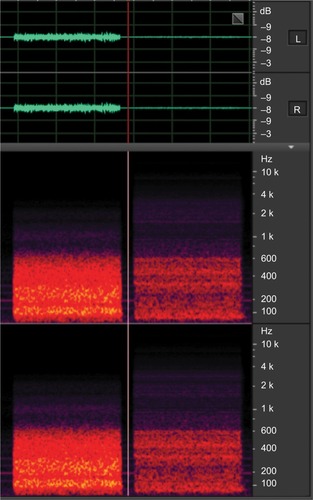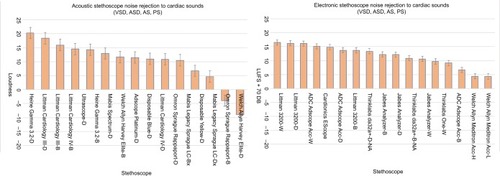Figures & data
Figure 1 Phantom container system.

Figure 2 Experimental setup.

Table 1 Stethoscope models evaluated
Figure 3 Frequency responses for each stethoscope.

Table 2 Clinically relevant frequency ranges
Figure 4 AMB rejection.
Abbreviations: AMB, ambient noise; L, left; R, right.

Figure 5 Sensitivity to GI sounds.
Abbreviations: GI, gastrointestinal; LUFS, Loudness Units relative to digital Full Scale.

Figure 6 Noise rejection of GI sounds.
Abbreviations: GI, gastrointestinal; LUFS, Loudness Units relative to digital Full Scale.

Figure 7 Sensitivity to cardiac sounds 22–281 Hz.
Abbreviation: LUFS, Loudness Units relative to digital Full Scale.

Figure 8 Noise rejection of cardiac sounds 22–281 Hz.
Abbreviations: LUFS, Loudness Units relative to digital Full Scale; MS, mitral stenosis.

Figure 9 Sensitivity to cardiac murmur sounds 205–775 Hz.
Abbreviation: LUFS, Loudness Units relative to digital Full Scale.

Figure 10 Noise rejection of cardiac sounds 205–775 Hz.
Abbreviations: AS, aortic stenosis; ASD, atrial septal defect; LUFS, Loudness Units relative to digital Full Scale; PS, pulmonic stenosis; VSD, ventricular septal defect.



